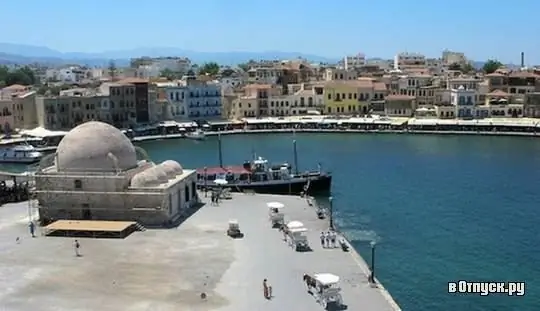
Description of the attraction
One of the most interesting cultural and historical monuments in Chania is the Yiali Tzami (also known as Giali Tzami) Turkish Mosque. The majestic old building rises above the Venetian harbor of Chania and is hard to miss.
The history of the Janissary Mosque begins in 1645, after the Ottoman Empire occupied most of the island of Crete. During this period, a significant part of the Greek churches were converted into mosques (as a sign of the power of the Great Ottoman Empire). An important task of the Turkish conquerors was to convert as many Christians as possible to their religion. They forced to accept Islam and the captive Christian boys, after which they raised them in strict obedience and religious devotion.
During the research, it was discovered that the mosque was built on the ruins of an old Venetian bastion. The Janissary Mosque is a huge square with one large dome supported by arches and seven small domes. The interior of the mosque is made in Turkish style, but some elements have survived from the Venetian era. Unfortunately, the minaret of the mosque has not survived to this day, as it was destroyed at the beginning of the 20th century (during the Greek war with the Turks for independence). During that period, almost half of the inhabitants of Chania were Muslim, and the Janissary Mosque was one of the most visited places in the city.
In 1923, the authorities carried out a population exchange as part of a repatriation plan. As a result, there were practically no Muslims left in the city, and the mosque lost its main purpose. For a long time, the building was used as a warehouse. Today, art exhibitions are held in the premises of the mosque. There is also a tourist office.






